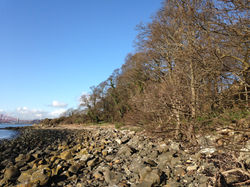Early April Flowers

There are some early wildflowers now to be seen in our wild flower area beside Crow Wood, and some are developing in the other woodlands too. A small clump of Oxslip on the bank suggests that this dry bank suits them, and as seed from these flowers is set and scattered we can expect more in the future.
There are Dead-nettles too, a family that are particularly important for bumblebee queens emerging from hibernation, and we have both the annual Red Dead-nettle and the larger flowered perennial White Dead-nettle which is a particular favourite of the gingery Common Carder bumblebees.



Not all of our wild bees are as large and obvious as the bumblebees. While the UK has some 24 species of bumblebee (we typically see only 6 of those) there are over 240 solitary bee species. Also very important flower pollinators, they are much smaller, and this early species feeding on a Dandelion flower is probably one of the ground nesting Andrena species which make burrows in sandy soil. They stock these with pollen and a little honey before laying a single egg in each. This food stock is enough for the larvae to eat and develop to emerge as adults later in the year before hibernating over winter.

Other flowers, like that springtime favourite Lesser Celandine, give a splash of bright yellow among the grass, and in disturbed ground over by the hedge are bright blue and white stars of Ground Speedwell. Lady’s Smock, self-seeded plants originally from the Scottish Wildlife Trust, Jupiter Wildlife Centre, are also in flower, though many of the flower buds have been eaten by Wood Pigeons, so they are not as bright a display as hoped.



In the woodlands themselves Red Campions are gearing up for their flowering, and in sunnier spots a few are already adding a splash of red, as this one seen beside the path in Hopeward Wood. The colour will fade to a paler pink as the flowers matures.


Red Campion is one of the species benefitting from the path side nettle clearing in Bathing House Wood done by P7 pupils of Donibristle Primary School, with some areas already having a good number of developing plants. These, along with other plants developing from the seed bank in this soil, will bloom in a few weeks, adding more colour and value for wildlife in place of the rather drab and unfriendly border of nettles along these paths. Plenty of nettles remain in other parts of the wood for the insects and other invertebrates that will make use of them.
So, when you are out walking through the woods, keep an eye out for developing flowers, and the insects that pollinate them, and add a little interest to your walk.
Dick Alderson
11 April 2016







































